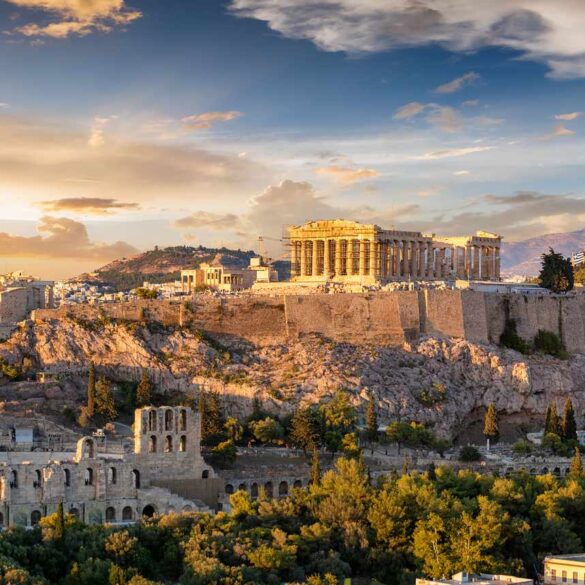10 oldest civilized cities of the world
Since the dawn of time, human beings have gathered together to form societies, laying the groundwork for what we now know as civilization. This article takes you on a fascinating journey to the past, uncovering the ten oldest civilized cities in the world.
These ancient cities played a pivotal role in shaping the course of human history and left behind remarkable legacies that continue to captivate us today. From the cradle of civilization in Mesopotamia to the magnificent temples of the Khmer Empire, we delve into the origins and achievements of these ancient urban centers, shedding light on their contributions to art, architecture, governance, and culture. Join us as we embark on a captivating exploration of the oldest cities that paved the way for the world we live in today.
1. Introduction: Exploring the Ancient Origins of Civilization
The Significance of Ancient Civilizations
Welcome, fellow history enthusiasts, to a journey through time! Today, we embark on an exploration of the oldest civilized cities in the world. These ancient metropolises not only offer a glimpse into the past but also hold great significance in shaping the course of human history. From the birth of complex societies to the development of writing systems and monumental architecture, these cities were the cradles of civilization.
2. The Mesopotamian Cradle: Ur - The Oldest City
Our first stop takes us to Ur, the oldest city known to humankind. Located in Mesopotamia, present-day Iraq, it dates back to around 3800 BCE. As we wander through the intriguing ruins of Ur, our imaginations run wild with visions of bustling markets, magnificent ziggurats, and ancient rituals. This city, with its majestic temples and advanced irrigation systems, paints a vivid picture of the Sumerian civilization, which gave birth to writing, the wheel, and the concept of city-states. Who knew ancient history could be so hip?
3. Ancient Egypt: Unveiling the Secrets of Memphis
Next, we venture to the land of pharaohs and pyramids as we explore Memphis, the first capital of ancient Egypt. Established around 3100 BCE, this city was a political and cultural hub, laying the foundation for one of history's most remarkable civilizations. Strolling through the ruins of Memphis, we can almost hear the stories of mighty pharaohs and marvel at the grandeur of the nearby Pyramids of Giza. It's as if we've stepped into a time warp and landed right in the heart of ancient Egypt!
4. Mohenjo-daro: The Indus Valley's Historic Gem
Our final destination transports us to Mohenjo-daro, a true gem of the ancient Indus Valley civilization. Lost for centuries, this captivating city was rediscovered in the 1920s, revealing a sophisticated urban center that thrived around 2500 BCE. As we wander through the well-planned streets and marvel at the impressive drainage system, we can't help but be in awe of the Indus Valley civilization's legacy. Their achievements in city planning, trade networks, and craftsmanship are a testament to the ingenuity of our ancestors.
And there you have it, folks! Our whirlwind tour of the ten oldest civilized cities in the world. These remarkable cities not only provide a fascinating window into ancient civilizations but also remind us of the ingenuity and resourcefulness of the human spirit. So, next time you find yourself lost in the hustle and bustle of a modern metropolis, take a moment to appreciate the ancient cities that paved the way for our vibrant, diverse world.
5. Athens: Birthplace of Democracy and Western Civilization
When it comes to ancient cities, Athens definitely takes the crown. This vibrant city, known as the birthplace of democracy and Western civilization, is a treasure trove of history and culture. A visit to Athens wouldn't be complete without exploring two iconic sites - the Acropolis and the Ancient Agora.
Perched high above the city, the Acropolis is home to some of the most extraordinary architectural wonders of antiquity. From the magnificent Parthenon to the impressive Temple of Athena Nike, you'll be transported back in time as you wander through the ruins and soak in the breathtaking views of the city below.
Just a short stroll from the Acropolis lies the Ancient Agora, once the heart of Athens' social and political life. Here, you can walk in the footsteps of ancient philosophers like Socrates and Plato as you explore the remains of ancient buildings and temples. Don't forget to visit the Stoa of Attalos, a beautifully restored ancient shopping mall, where you can take a break and contemplate life - just like the ancients did.
5.2 The Influence of Athens on Philosophy and Literature
Athens wasn't just a city of impressive architecture - it also birthed some of the greatest minds in history. The influence of Athens on philosophy and literature cannot be overstated.
Think about it - Socrates, Plato, and Aristotle all walked these streets, engaging in lively discussions and shaping the foundations of Western thought. Their ideas on ethics, politics, and the nature of knowledge continue to resonate with us today.
But it wasn't just philosophy that thrived in Athens. The city was also a hub for literature and the arts. Playwrights like Aeschylus, Sophocles, and Euripides created timeless tragedies that explored the human condition. And let's not forget the immortal works of Homer, whose epic poems, the Iliad and the Odyssey, continue to captivate readers across the centuries.
Athens truly is a city where history comes alive. Whether you're exploring ancient ruins or delving into the philosophical and literary legacies that have shaped our world, Athens is a must-visit for any history enthusiast.
6. Rome: The Eternal City and the Cradle of European Civilization
6.1 The Colosseum: Icon of Ancient Rome
When in Rome, do as the Romans do - and that means immersing yourself in the rich history and grandeur of this ancient city. Rome, known as the Eternal City, is not only the capital of Italy but also the cradle of European civilization.
One of the most iconic landmarks of ancient Rome is the Colosseum, a testament to the grandeur and brutality of Roman society. As you step inside this massive amphitheater, you can almost hear the roar of the crowd and envision the gladiatorial battles that once took place here. It's a humbling experience that reminds us of the immense power and influence of the Roman Empire.
6.2 Roman Law and Governance
But Rome's influence goes beyond its impressive architecture. The city was also a pioneer in law and governance, laying the foundations for modern legal systems.
Roman law, with its emphasis on justice and fairness, has shaped legal systems around the world. Concepts like the presumption of innocence, legal representation, and the right to a fair trial all have their roots in Roman jurisprudence. It's fascinating to think that the legal principles we often take for granted today can be traced back to the ancient Romans.
Governance was also a significant aspect of Roman civilization. The Roman Republic introduced the concept of representative government, with elected officials and a system of checks and balances. It was an early experiment in democracy that would later influence the development of political systems across the globe.
So, when you visit Rome, take a moment to appreciate not only its majestic ruins but also the lasting impact it has had on our laws and governance.
7. The Aztec Capital: Discovering the Splendor of Tenochtitlan
7.1 The Magnificent Temples and Palaces of Tenochtitlan
Travel back in time to the heart of the Aztec Empire and discover the splendor of Tenochtitlan, one of the oldest and most advanced civilizations in the Americas. Located in present-day Mexico City, this ancient capital was a marvel of engineering and culture.
As you explore the ruins of Tenochtitlan, you'll be mesmerized by the magnificent temples and palaces that once adorned the city. The Great Temple, dedicated to the Aztec gods Huitzilopochtli and Tlaloc, was a towering masterpiece of architecture. Its intricate carvings and imposing presence will leave you in awe of the Aztec's artistic and engineering prowess.
7.2 Aztec Art and Religion
The Aztecs were not only skilled builders but also talented artists. Their art, which often depicted gods, nature, and daily life, provides insight into their religious beliefs and cultural practices. From intricate stone carvings to vibrant murals, Aztec art is a visual feast that transports you to a world of mythology and symbolism.
Religion played a central role in Aztec society, with rituals and ceremonies being an integral part of daily life. The Templo Mayor, the main temple in Tenochtitlan, was the epicenter of religious activity. It was here that the Aztecs performed elaborate ceremonies and made offerings to their gods in the hope of ensuring prosperity and well-being.
Visiting Tenochtitlan is like stepping into a different time and place. The remnants of this once-great city give us a glimpse into the rich and complex world of the Aztecs.
8. Ankor Wat: A Glimpse into the Majestic Khmer Empire
8.1 Exploring the Temples of Angkor Wat
Hidden within the jungles of Cambodia lies a testament to the grandeur of the Khmer Empire - the magnificent temples of Angkor Wat. This sprawling complex, spanning over 400 square kilometers, is a breathtaking display of architectural brilliance and artistic mastery.
Exploring the temples of Angkor Wat is like embarking on a treasure hunt. From the iconic silhouette of Angkor Wat itself to the enigmatic faces of the Bayon temple, every corner reveals a new wonder. The intricate carvings, intricate details, and sheer scale of these ancient structures leave visitors speechless.
8.2 The Cultural and Architectural Marvels of the Khmer Empire
But Angkor Wat is not just a collection of temples; it represents an entire civilization. The Khmer Empire, which flourished from the 9th to the 15th century, left behind a rich cultural and architectural legacy. The empire's architectural achievements, such as advanced irrigation systems and massive reservoirs, demonstrate their mastery of engineering and urban planning.
The Khmer people's deep reverence for religion is evident in the complex's temples, which were not only places of worship but
As we conclude this journey through the oldest civilized cities of the world, we are reminded of the incredible achievements of our ancient ancestors. These cities, with their rich history and cultural significance, have left an indelible mark on our collective human story. By understanding and appreciating the legacies of these ancient metropolises, we gain a deeper appreciation for the roots of civilization and the remarkable ingenuity of the people who built them. Let us continue to marvel at the wonders of our past and draw inspiration from the ancient cities that have stood the test of time.
FAQ
1. How were these cities determined to be the oldest civilized cities?
The determination of the oldest civilized cities is based on archaeological evidence and historical records. Researchers analyze the remains of ancient settlements, artifacts, and written records to determine the age of a city and its level of civilization.
2. Are these cities still inhabited today?
While some of these cities have continued to be inhabited and have evolved into modern urban centers, others may only exist as archaeological sites or ruins. Each city has its own unique history and current status.
3. What were the main factors that contributed to the growth and prosperity of these ancient cities?
Several factors played a crucial role in the growth and prosperity of these ancient cities, including favorable geographical location, access to resources such as water and fertile land, advanced agricultural practices, trade networks, political stability, technological advancements, and cultural achievements.
4. Can visitors explore these ancient cities today?
Many of these ancient cities are open to visitors who wish to explore their historical and cultural treasures. However, it is important to note that some sites may require special permits or have restrictions in place to preserve and protect the archaeological remains.




